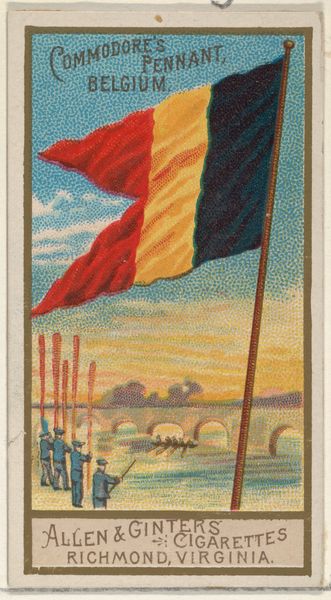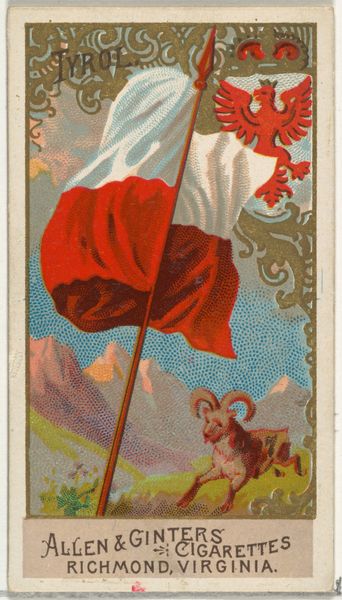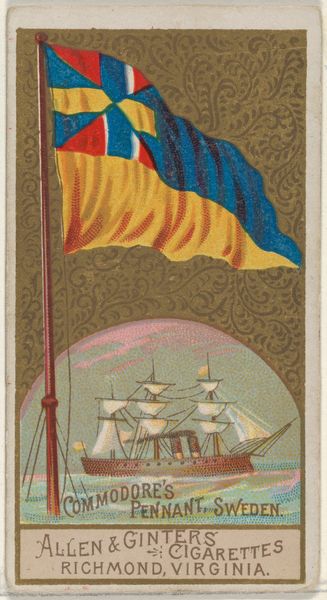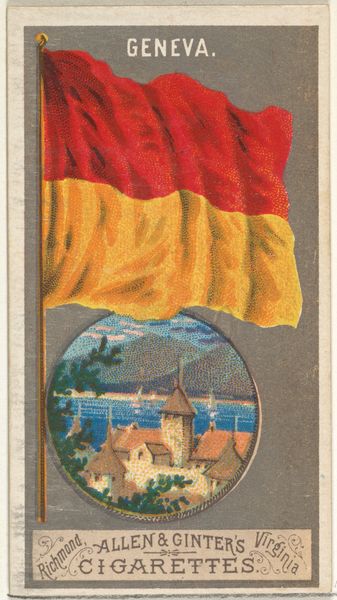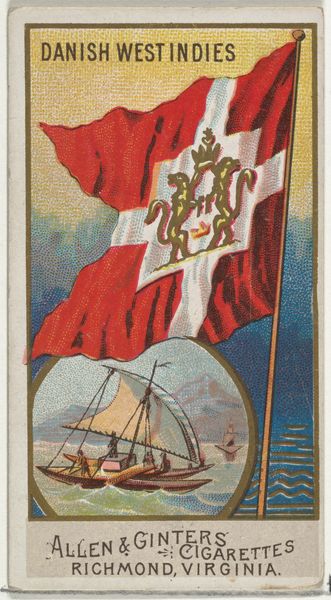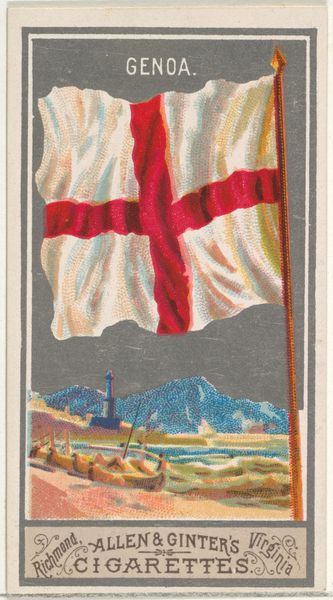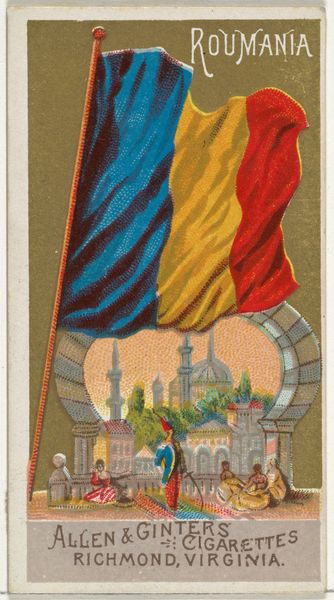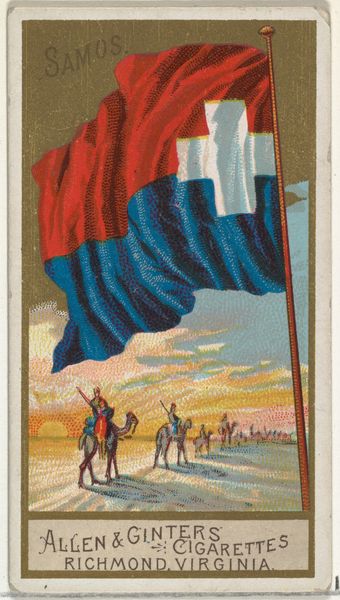
Alsace and Lorraine, from Flags of All Nations, Series 2 (N10) for Allen & Ginter Cigarettes Brands 1890
0:00
0:00
drawing, coloured-pencil, print
#
drawing
#
coloured-pencil
# print
#
landscape
#
caricature
#
coloured pencil
#
academic-art
#
miniature
Dimensions: Sheet: 2 3/4 x 1 1/2 in. (7 x 3.8 cm)
Copyright: Public Domain
Curator: I'd like to draw our listeners' attention to "Alsace and Lorraine," a color print drawing dating to 1890 by Allen & Ginter. It’s from their Flags of All Nations series, initially produced for cigarette cards. Editor: The immediate impact is of this striking juxtaposition. A large, brightly colored flag dominating the scene, yet offset by a meticulously rendered miniature landscape and several carefully arranged figures. Curator: Yes, it speaks volumes about contested territories. Alsace and Lorraine were, at the time, a hotbed of political contention between France and Germany. This card encapsulates the sentiment surrounding a population grappling with shifting national identities. The imagery, rendered in a format designed for mass consumption, acted as propaganda subtly shaping public opinion. Editor: I agree, and look at the execution. The artist contrasts the bold blocks of color in the flag with a more delicate application in the natural setting. Observe the way the coloured pencil evokes textures, the cloth of the flag, the foliage of the trees. Curator: That duality is intriguing. These materials situate the artwork in its historical moment but its presence in everyday cigarette packaging also alludes to issues of labour, power, and even imperialism at that time. These cards, beyond their advertising purpose, become a reflection of a broader socio-political narrative, perpetuating notions of nationalism and commodity culture. Editor: Absolutely, this visual harmony draws one into considering layers of both implicit meaning and aesthetic intent. It makes a point by creating an appealing image in miniature to capture a broader idea. Curator: Through that formal harmony, the artists also perpetuated—perhaps unconsciously— prevailing power dynamics and colonial ambitions of that era. These objects reflect not only historical moments, but also the prevailing attitudes of a specific societal milieu. Editor: Well, on reflection, it presents a fascinating lens through which to understand art’s potential to be visually arresting as well as reflective of its time. Curator: Indeed, considering its multiple layers of aesthetic and cultural context makes for compelling insight.
Comments
No comments
Be the first to comment and join the conversation on the ultimate creative platform.
